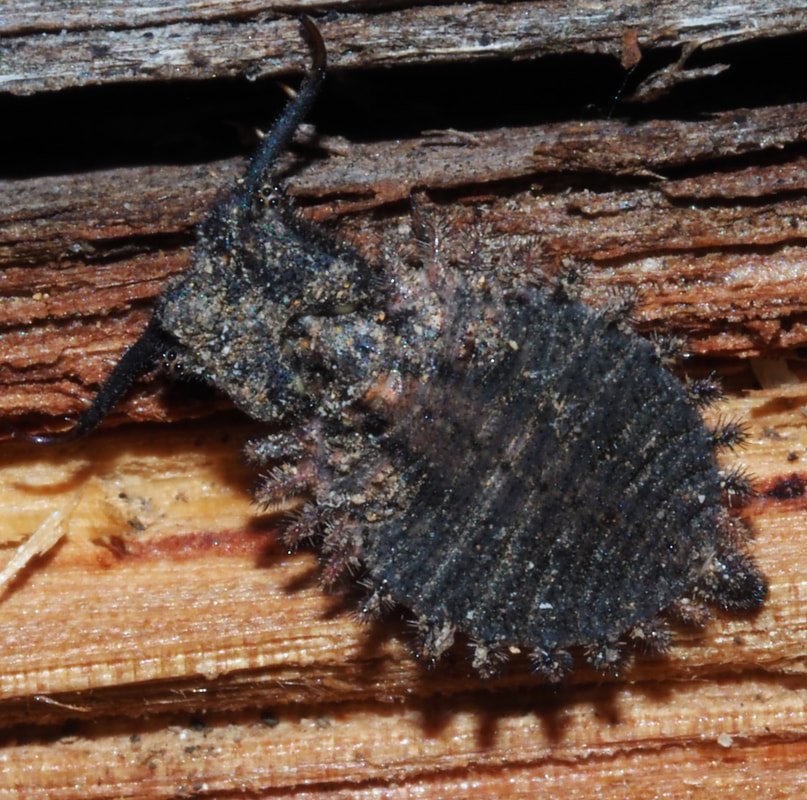Having large compound eyes and four clear wings,and a similar body shape, Neuropterans can resemble dragonflies and damselflies (order Odonata), but they evolved much later..
| Dragonflies and damselflies are amongst the earliest winged insects, which evolved about 300 million years ago as daylight predators that ate ancient spiders,millipedes and silverfish. They evolved in a warm lush climate when ferns were giving way to taller gymnosperms. Superb vision and exceptional flying abilities have enabled them to remain almost unchanged to the present day, but as their larvae are aquatic they need to be near fresh water. |
| After dragonflies appeared there was a huge extinction event, a glacial period and very dry world climate before gradual warmer moister conditions, when 150 million years later, Neuroptera evolved as land predators to hunt more recent insects like wasps, ants and and bees. An antlion resembles a damsel fly, but its body and behaviour reveal key differences:
|
- Adults have large antennae because they hunt in the evening and at night
- Adults are proportionally much larger than their larvae than dragonflies. They are more flimsy with a thinner exoskeleton and are clumsy fliers.
| Owl flies (family Ascalaphidae) are closely related to antlions, but are active fliers that can catch their prey on the wing like dragonflies. The larva, which resemble those of ant lions hide in bark or ground litter. Adult owl flies have enormous golf club-antennae, and amazing compound eyes, which enable them to hunt in twilight. Their compound eyes are split, The front half exclusively detects ultraviolet, and the rear has extra sensitivity in the blue-green range. Apparently this sharply delineates their prey against a uniform background. They are the nightfighters of the insect world, and stay immobile during the day with their abdomen raised to resemble a twig. |










